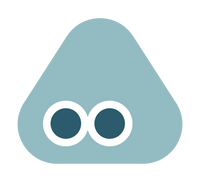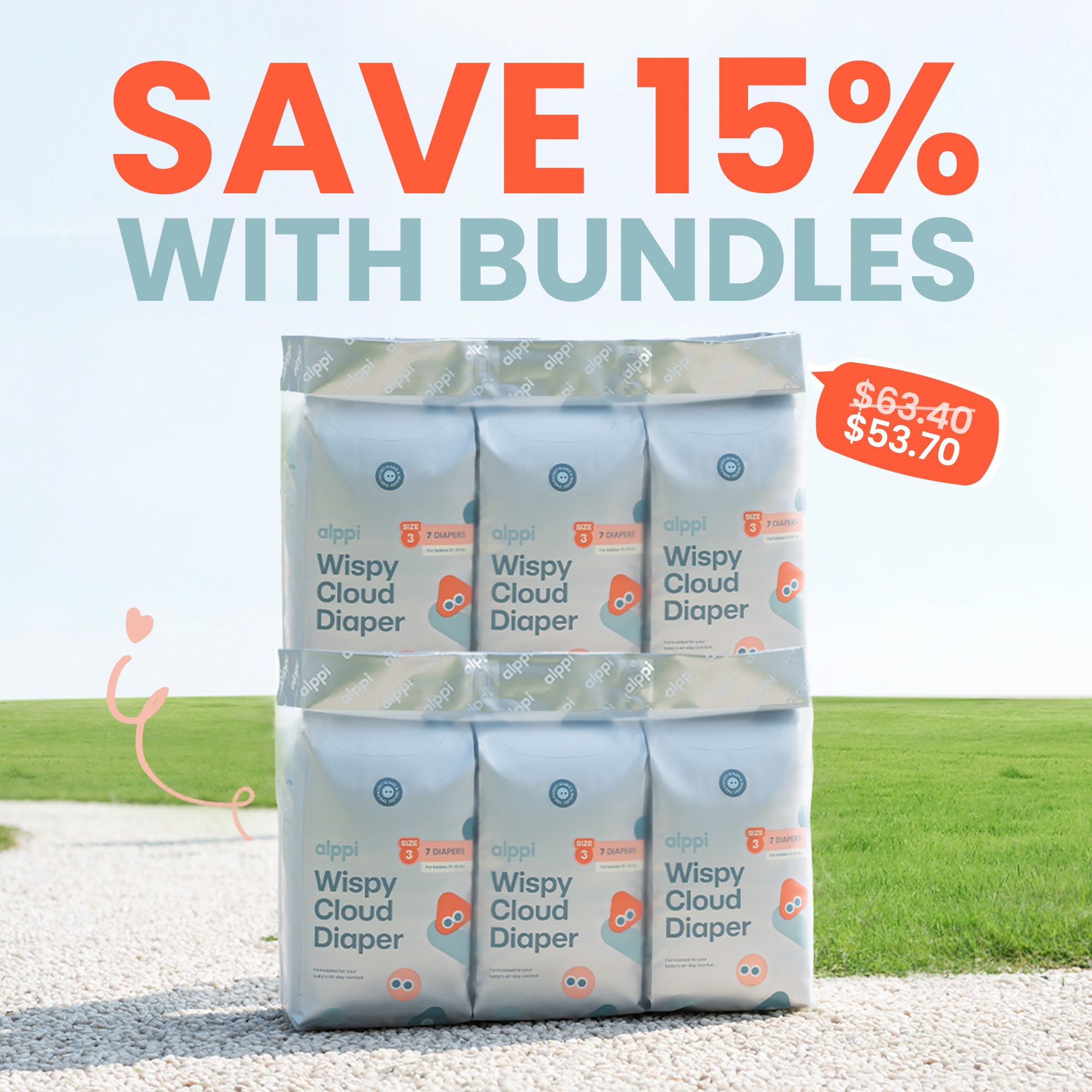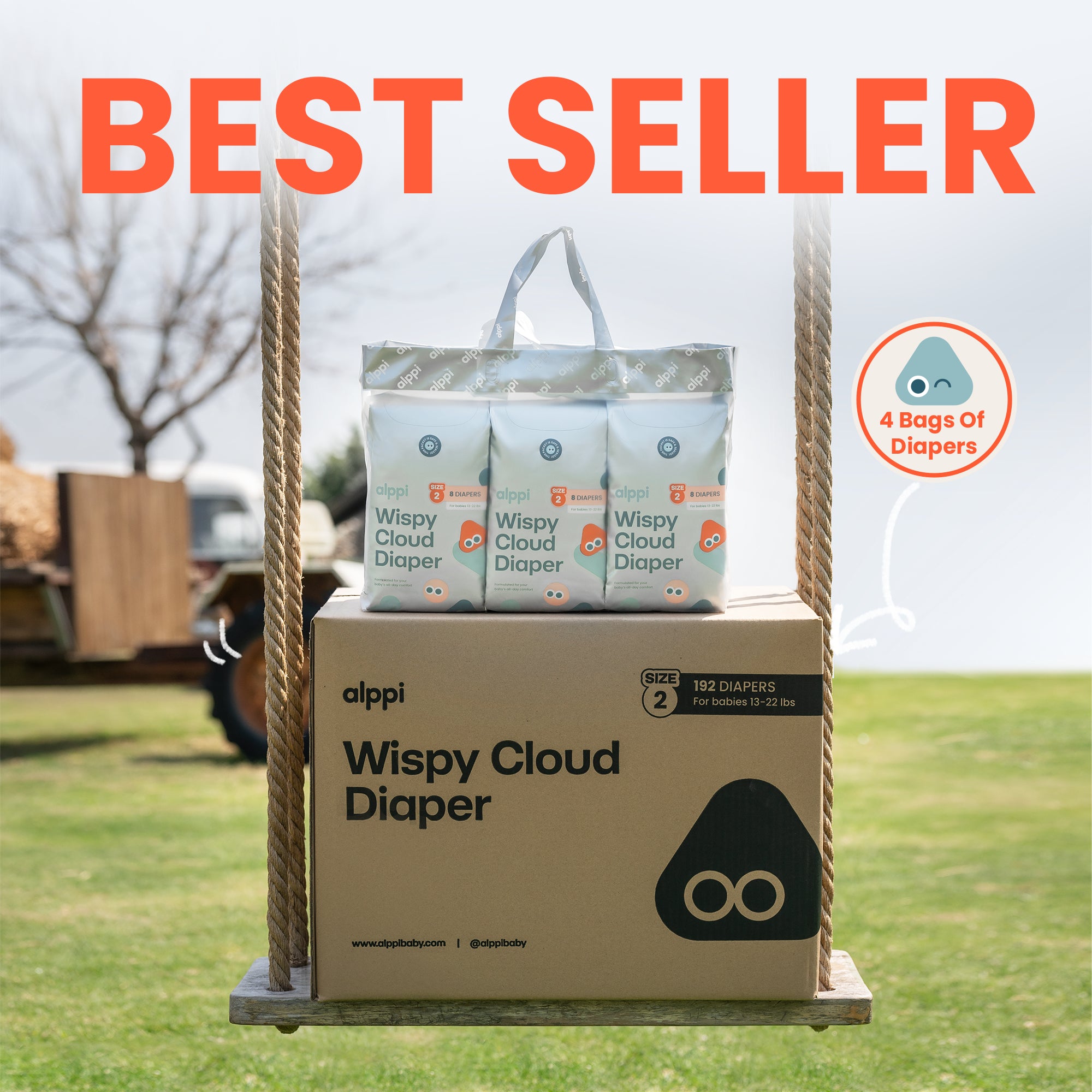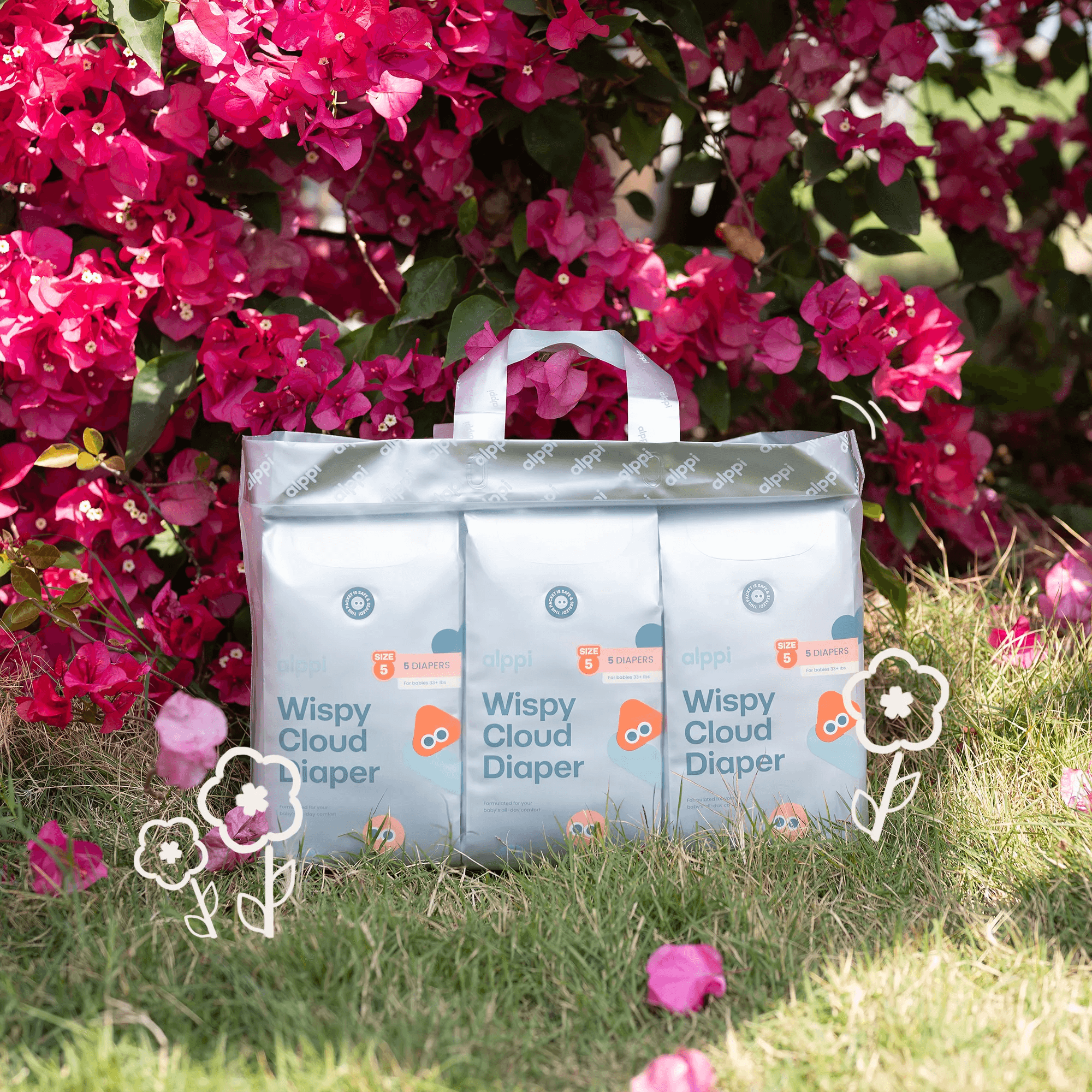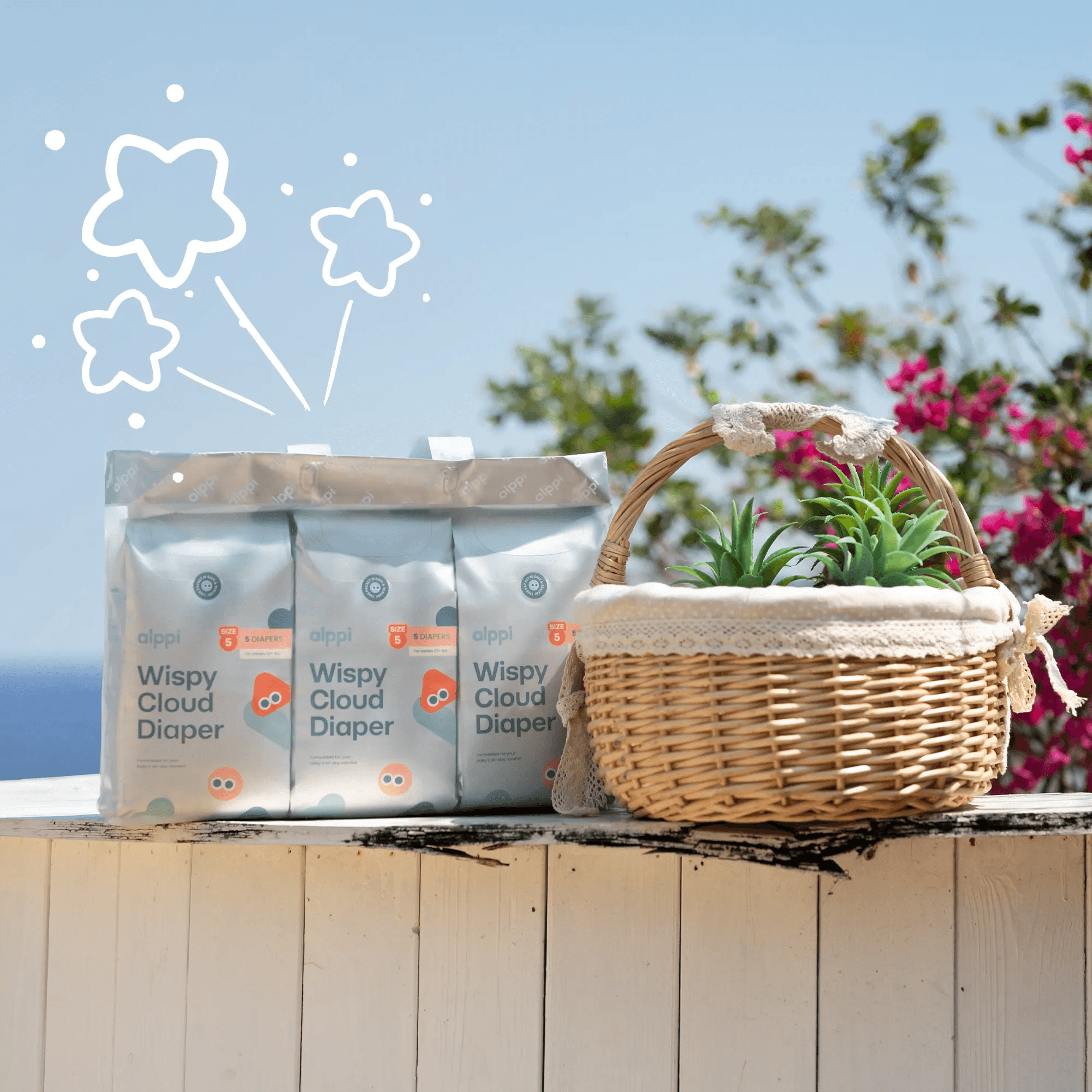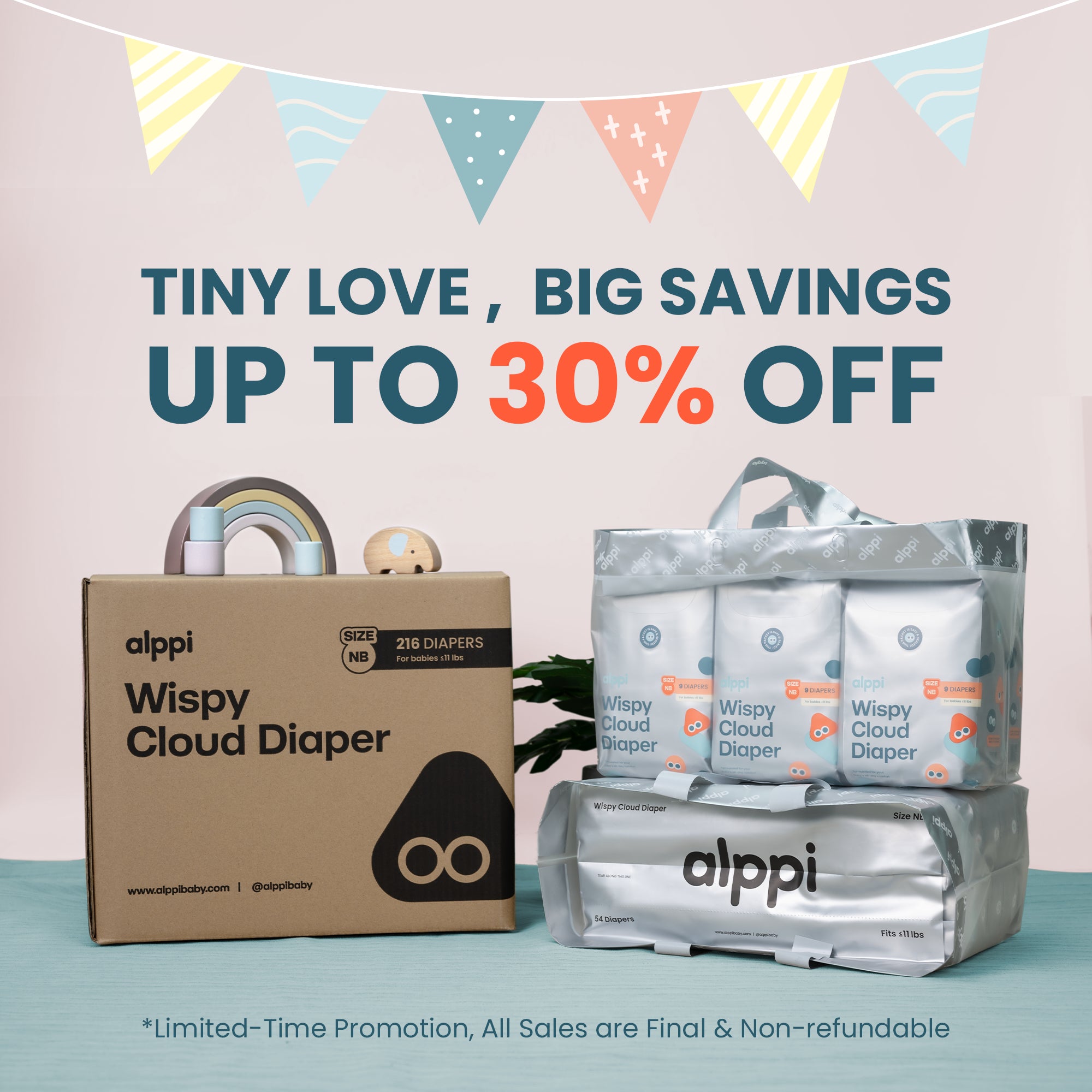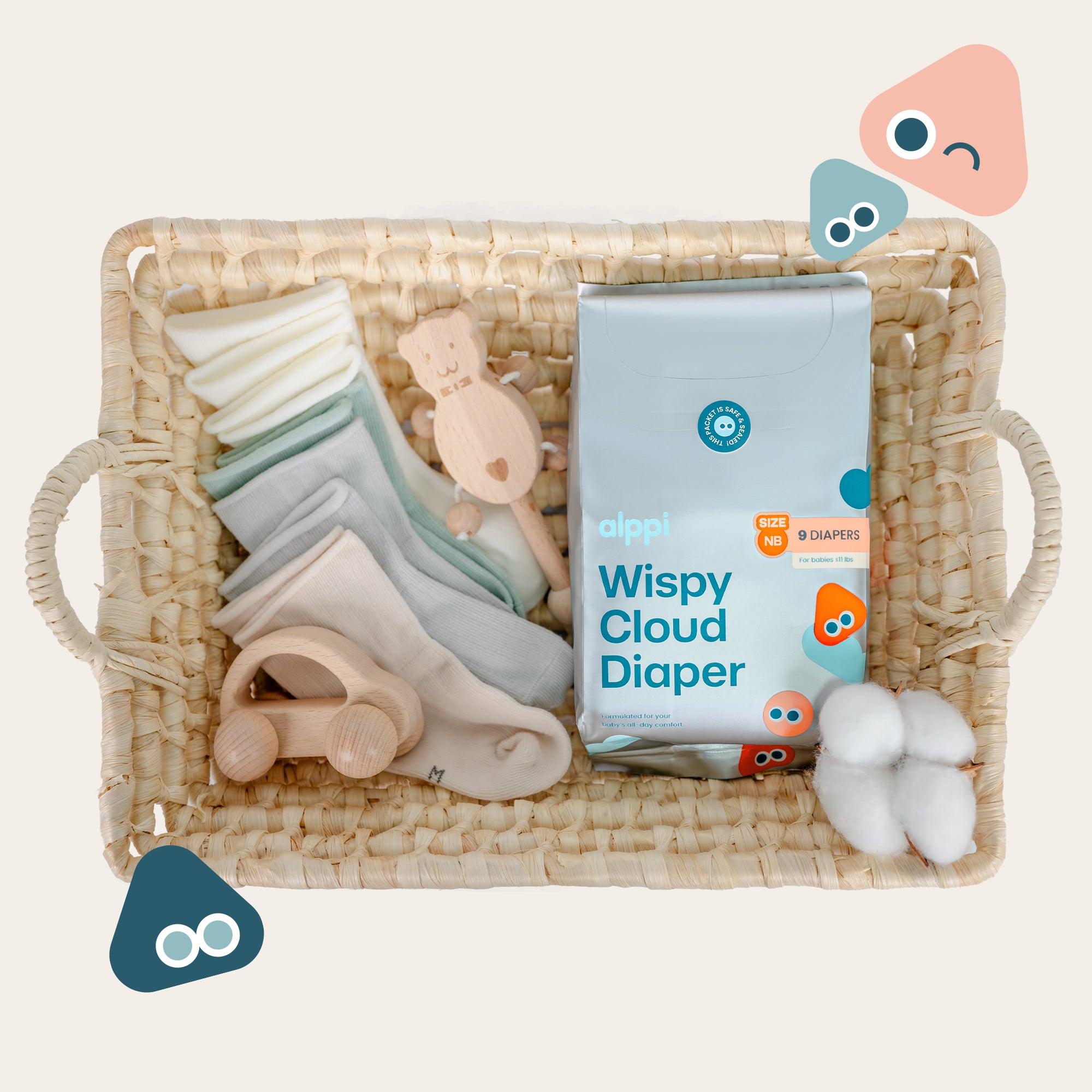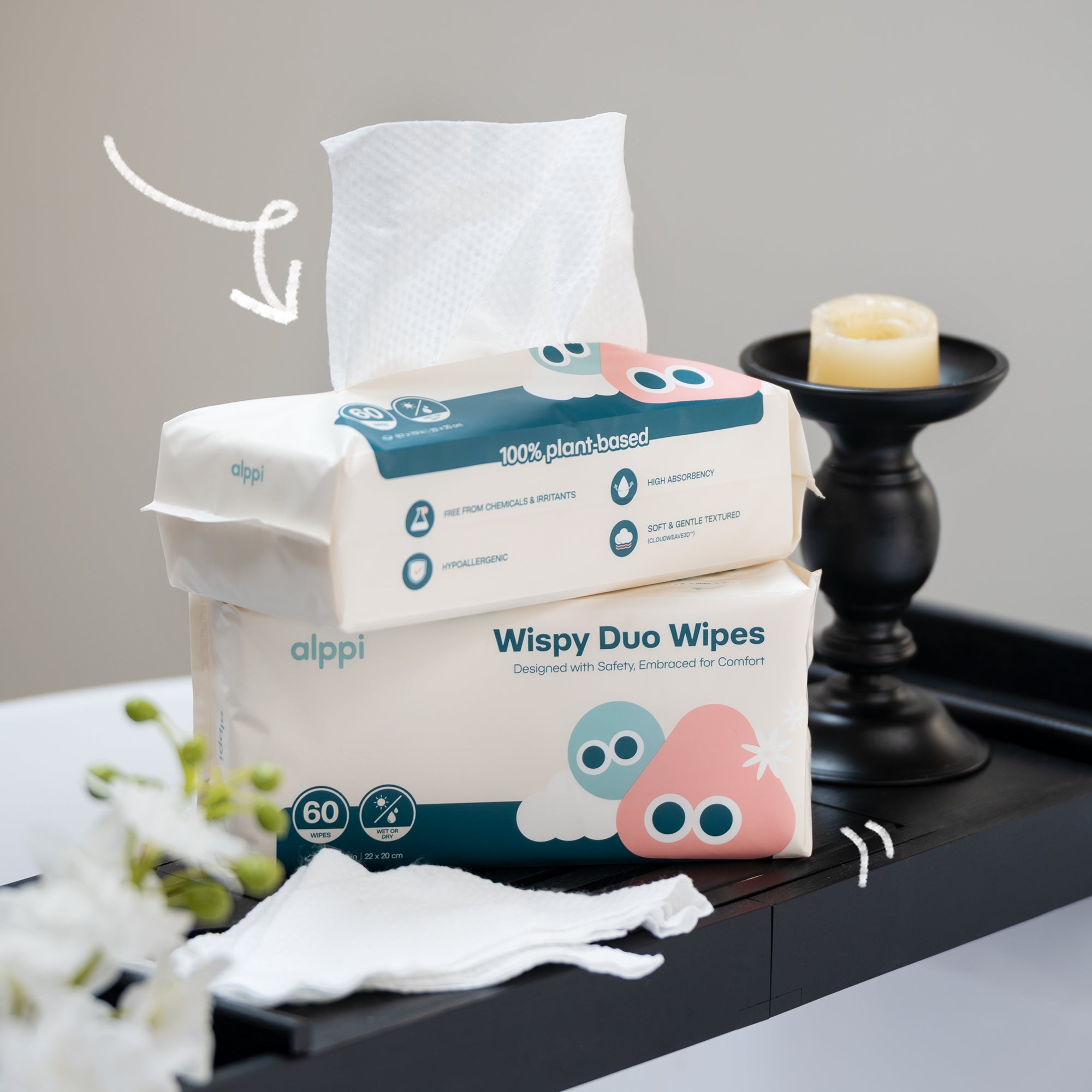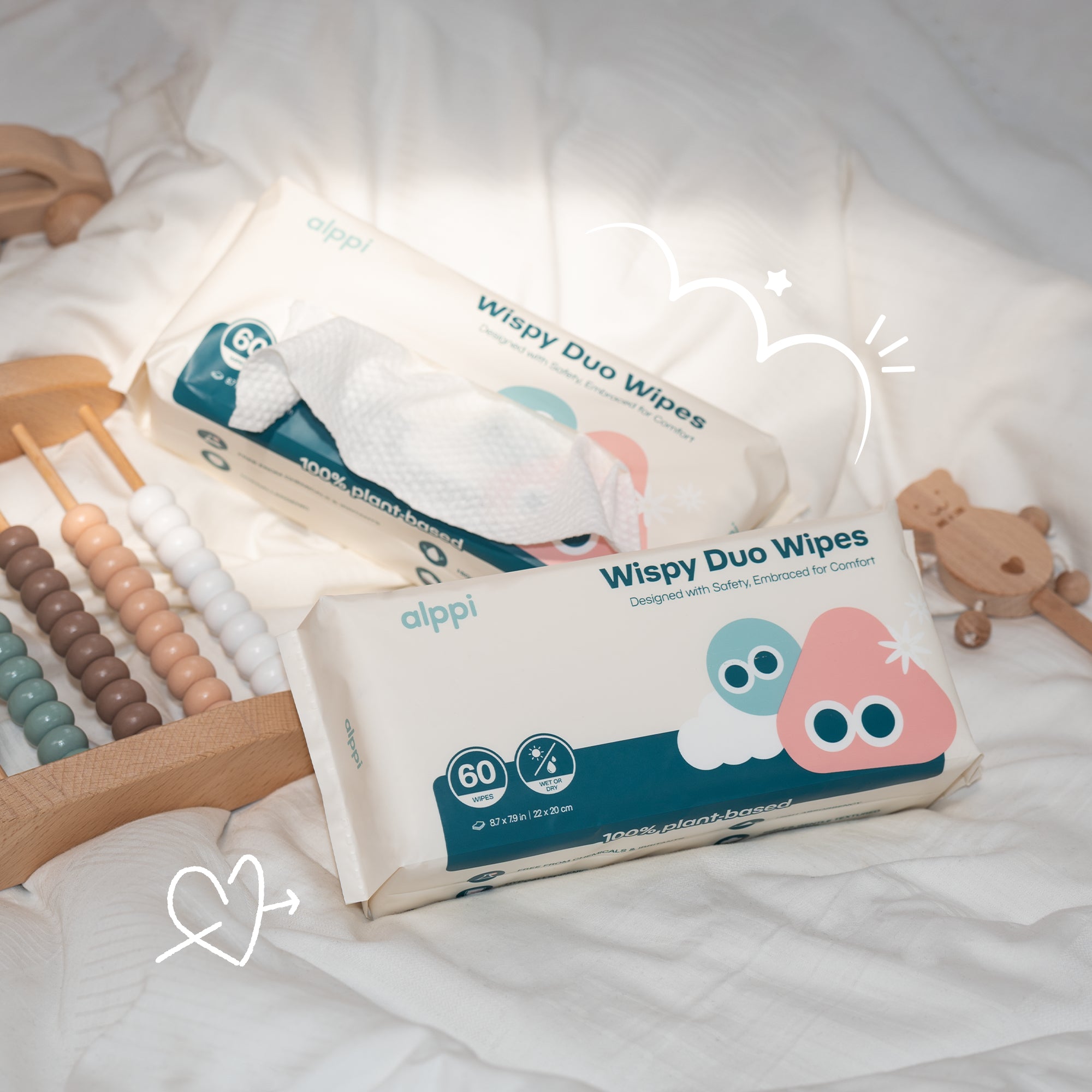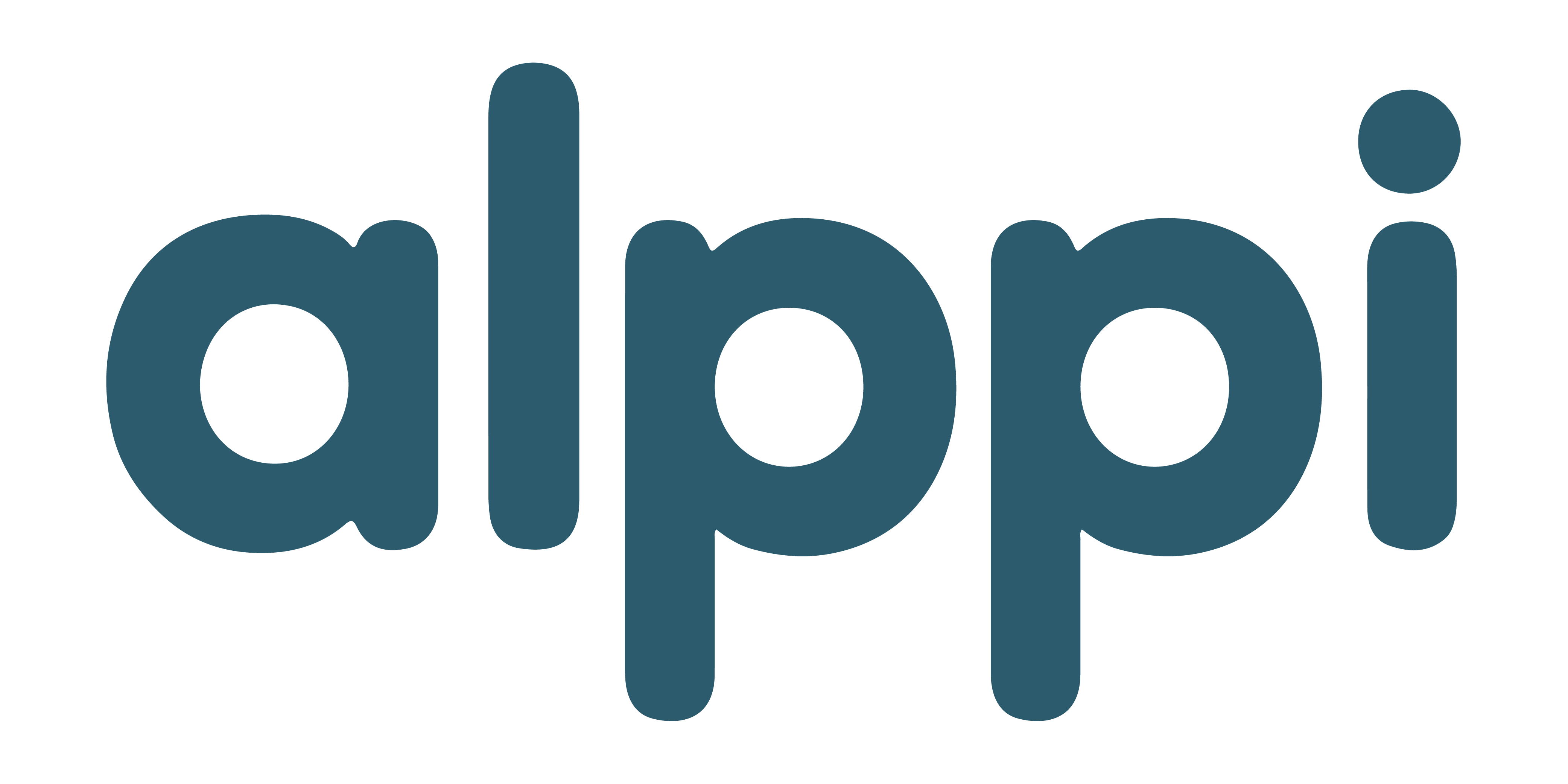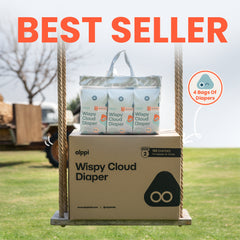TCF vs ECF diapers might sound like technical terms, but they’re actually about how your baby’s diapers are made—and what touches their skin every day. The difference comes down to how the materials are bleached during production.
TCF stands for “Totally Chlorine‑Free,” while ECF means “Elemental Chlorine‑Free.” Both aim to reduce harmful chemicals, but one goes a step further in purity and sustainability.
Understanding these terms helps you make informed choices about your baby’s comfort, health, and the planet. Let’s break down what sets TCF and ECF diapers apart so you can choose what’s best for your family.
Choose peace of mind with our non‑toxic diapers, made without chlorine, fragrances, or harmful additives for gentle, everyday protection.
Understanding TCF And ECF Diapers

Diaper makers use different bleaching methods to whiten wood pulp. The main question is whether they use chlorine compounds, which can affect safety, environmental impact, and cost.
What TCF (Totally Chlorine‑Free) Means
Totally Chlorine‑Free (TCF) diapers use pulp bleached with zero chlorine or chlorine compounds. Instead, manufacturers turn to things like oxygen, hydrogen peroxide, or ozone. These get the pulp white without making the harmful chemicals linked to chlorine-based bleaching.
TCF pulp usually gets the nod for being more eco-friendly because it avoids chlorine byproducts like dioxins. Dioxins can stick around in water and soil for ages, and nobody wants that.
Plenty of parents pick TCF diapers for their lighter environmental footprint and the sense of safety they offer. That said, TCF production often costs more, so these diapers can be pricier on the shelf.
|
Feature |
TCF (Totally Chlorine‑Free) |
|
Bleaching agent |
Oxygen‑based compounds |
|
Chlorine use |
None |
|
Environmental impact |
Lowest |
|
Cost |
Usually higher |
What ECF (Elemental Chlorine‑Free) Means
Elemental Chlorine‑Free (ECF) diapers use chlorine dioxide—not straight-up chlorine gas—to bleach pulp. This method cuts down dioxins and similar compounds, though it doesn’t wipe them out completely.
ECF bleaching is now the industry go-to because it strikes a balance: it’s safer for the environment than old chlorine methods and still efficient for production. You get bright, clean pulp, but at a lower cost than TCF.
While ECF isn’t 100% chlorine-free, it’s a big step up from the past. Most major diaper brands stick with ECF pulp since it meets environmental rules and keeps prices reasonable for families.
|
Feature |
ECF (Elemental Chlorine‑Free) |
|
Bleaching agent |
Chlorine dioxide |
|
Chlorine use |
Indirect, reduced |
|
Environmental impact |
Moderate |
|
Cost |
Lower than TCF |
Why Chlorine Use Matters In Diaper Production
Chlorine bleaching can leave behind trace amounts of dioxins, a toxic group of chemicals that build up in the environment. Even though levels in modern diapers are tiny, cutting chlorine use helps keep these pollutants in check during manufacturing.
The TCF vs. ECF choice affects more than just the diaper—it shapes the supply chain’s sustainability too. TCF mills usually run tighter wastewater controls and keep emissions lower.
If you’re big on eco-friendly production, TCF probably looks better. If you’re more focused on cost and finding diapers easily, ECF is a solid option. Both aim for clean, absorbent diapers that don’t trash the environment.
Make a planet‑friendly choice with our eco‑friendly diapers, designed with sustainable materials that are safe for your baby and the environment.
TCF Vs ECF Diapers: Key Differences
TCF and ECF diapers split mainly on how they whiten pulp, which chemicals are in play, and what that means for health and the environment. These differences touch on performance, safety for babies, and how sustainable the whole process is.
Whitening Process And Chemical Exposure
Elemental Chlorine Free (ECF) diapers use chlorine dioxide to bleach wood pulp. This skips elemental chlorine but still brings chlorine compounds into the mix. The process gets the pulp bright and clean, while keeping dioxins pretty low.
Total Chlorine Free (TCF) diapers steer clear of chlorine-based chemicals altogether. Instead, they rely on oxygen, ozone, or hydrogen peroxide. These options lower the odds of leaving behind chlorinated residues.
|
Type |
Bleaching Agent |
Chlorine Compounds Used |
Example Methods |
|
ECF |
Chlorine dioxide |
Yes (indirectly) |
Controlled chlorine dioxide bleaching |
|
TCF |
Oxygen-based agents |
No |
Oxygen, ozone, hydrogen peroxide |
ECF bleaching is everywhere because it’s a good middle ground for cost and performance. TCF is less common, but it’s the go-to for folks who want zero chlorine exposure.
Environmental Impact
The way pulp gets bleached affects what ends up in water and air. ECF production still makes small traces of chlorinated organic stuff, but it’s way less than the old methods. Modern mills treat their wastewater to cut down on these leftovers.
TCF production skips chlorine entirely, which means persistent pollutants are less of a worry. TCF mills often use renewable energy and closed-loop systems to keep waste down.
But there’s a catch: TCF can use more energy to get pulp as bright as ECF does. Depending on the mill’s setup and power source, this might eat into some of TCF’s environmental gains.
Both methods are cleaner than the old chlorine ways, but if your top concern is cutting out chlorine, TCF wins that round.
Skin Sensitivity And Safety For Babies
Both types are safe as long as they’re made right. ECF diapers might have traces of chlorine-related byproducts, but these are usually way below safety thresholds. Most babies do just fine with them.
TCF diapers ditch chlorine compounds altogether, which some parents prefer if their baby has super sensitive skin. No chlorine derivatives means less chance of irritation from that angle.
Honestly, things like fragrances, adhesives, or dyes are often bigger culprits for skin reactions than how the pulp’s bleached. Sometimes, it’s just trial and error to find what works best for your kid.
Choosing The Right Option For Your Baby

Parents weigh diaper choices by safety, environmental impact, and cost. Understanding labels, certifications, and what’s actually behind the marketing helps make those decisions a bit less overwhelming.
How To Read Labels And Certifications
Diaper packages often mention “TCF” (Totally Chlorine Free) or “ECF” (Elemental Chlorine Free). That’s just about how the pulp was bleached—TCF means no chlorine at all, ECF means chlorine dioxide was used (which doesn’t create the worst dioxins).
Other certifications to keep an eye out for:
- FSC (Forest Stewardship Council) – means the pulp comes from well-managed forests.
- Dermatologically tested – suggests the product is safe for skin.
- OEKO-TEX® Standard 100 – checks for harmful substances.
Look for what’s not in the diaper too—like fragrance-free, latex-free, or phthalate-free. These matter a lot if your baby’s skin is sensitive.
Reading ingredients is worth the effort since some brands talk up sustainability but still use mixed or non-biodegradable materials. Third-party certifications are usually the most reliable way to know what you’re really buying.
Balancing Safety, Sustainability, And Cost
Both TCF and ECF diapers are safe when made well. The real differences show up in environmental impact and price.
TCF diapers cut out chlorine, but making them usually takes more energy and wood. ECF diapers use chlorine dioxide, which keeps pulp bright and production efficient.
|
Type |
Bleaching Agent |
Environmental Impact |
Typical ost |
|
TCF |
Oxygen, peroxide, or ozone |
Higher energy use, no chlorine |
Higher |
|
ECF |
Chlorine dioxide |
Lower energy use, minimal emissions |
Lower |
It’s a trade-off. ECF diapers are usually cheaper and easier to find, while TCF diapers are for those who really want to avoid chlorine, no matter the extra cost. For a lot of families, ECF hits the right balance between safety and sustainability.
Why Many Parents Prefer TCF Diapers
Some parents pick TCF diapers because they want to avoid chlorine compounds entirely. That brings peace of mind—especially if you’re worried about chemicals in everyday products.
TCF diapers appeal to families trying to cut down on environmental chemicals at home. Even though ECF is already pretty safe and well-regulated, TCF is the strictest standard out there for chlorine-free pulp.
People who want minimal processing and transparency about what’s in their diapers tend to gravitate toward TCF brands, even with the higher price tag. These products often call themselves “pure” or “eco-premium,” which is a draw for parents who want to know every ingredient.
But there’s no getting around it—TCF diapers can be harder to find and more expensive, since only a handful of mills make TCF pulp. For families set on avoiding chlorine entirely, that’s a trade-off they’re willing to make.
Keep your baby comfy from morning to night with daily diapers that combine softness, leak protection, and breathable comfort for every adventure.
Conclusion: TCF vs ECF
Both TCF and ECF diapers are safe, gentle, and made with fewer chemicals than traditional options. The main difference lies in how the pulp is bleached—TCF skips chlorine entirely, while ECF uses a safer alternative.
If you care most about purity and eco‑friendliness, TCF might be your pick. If you value efficiency and sustainability, ECF is still a great choice. Either way, choosing chlorine‑free diapers helps protect your baby’s skin and the planet.
Curious about other baby care questions? Read our guide on what green poop means.
Frequently Asked Questions
TCF (Totally Chlorine Free) and ECF (Elemental Chlorine Free) diapers both use updated bleaching methods that keep harmful chlorine byproducts at bay. The main differences are in the pulp processing and the resources each method demands.\
Is TCF better than ECF?
TCF diapers avoid all chlorine compounds, while ECF uses chlorine dioxide instead of elemental chlorine. Both are safe for babies. TCF offers zero chlorine exposure, but ECF is often more energy‑efficient and sustainable.
What is the difference between ECF and TCF diapers?
ECF uses chlorine dioxide to whiten pulp without creating dioxins. TCF relies on oxygen‑based agents like hydrogen peroxide. The main difference is in the bleaching process, not comfort or safety.
Do TCF diapers really matter?
Both types meet strict safety standards for babies. The choice usually depends on your environmental priorities and brand trust. Many companies choose ECF for its balance of safety and efficiency.
What is ECF and TCF?
ECF (Elemental Chlorine‑Free) uses chlorine dioxide to reduce harmful byproducts. TCF (Totally Chlorine‑Free) skips chlorine entirely and uses oxygen‑based bleaching. Both methods create safer, cleaner diapers for your baby.
